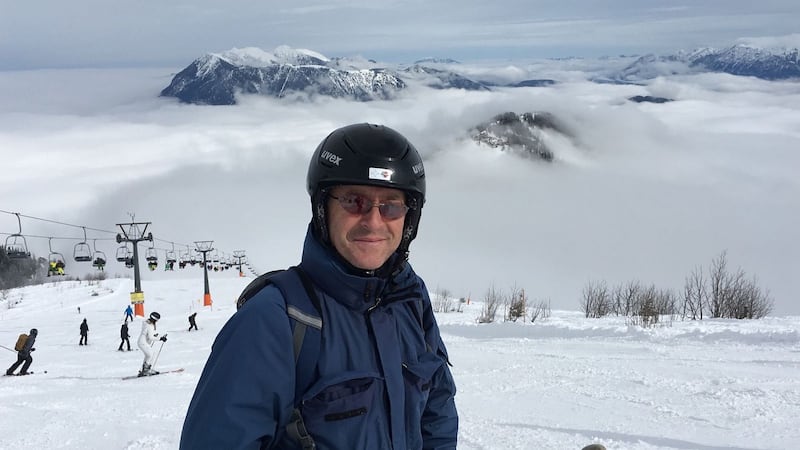Paul Barnes grew up near the village of Stepaside at the foot of the Dublin Mountains. He lived in Rotterdam, Brighton, Munich and Kilmacanogue, Co Wicklow, before returning to Munich – and the mountains – in 2012. He is “Country Manager” in a multinational company, with responsibility for Germany and Austria.
Where is the first place you always bring people to when they visit Munich?
When I pick visitors up from Munich airport, I frequently head south into the city-centre and drive them up Leopold Strasse – a beautiful Italianesque tree-lined boulevard with lively, varied cafés and restaurants, and people sitting outside most times of the year. This leads straight onto Odeons Platz, giving my visitors a sense of the flair and excitement of this beautiful city. I then take the “Altstadt Ring” around the old city of Munich, with its narrow streets and impressive buildings, many of them restored faithfully following the destruction of the second World War. Then I point the car onto the A95 – the Garmischer Autobahn – going south, put the boot down (there is no speed limit in Germany) and in 15 minutes arrive at the picturesque village of Schäftlarn, where I live.


The top three things to do there, that don’t cost money, are . . .
The “English Gardens” is a large city-centre park with a fast-flowing river containing several famous beer gardens. It is a wonderful place to stroll, jog or cycle, year-round. In summer and autumn, many people walk and swim in the nude – the Germans couldn’t care less, but it might put you off your Bratwurst. The river Isar runs down from the Alps through central Munich, and offers miles and miles of easily accessible wooded walks and beach areas, where families BBQ, swim and lie in the sun. Just south of Munich and a short train ride is Lake Starnberg, a 20 kilometre-long lake with exquisite views of the Zugspitze (Germany’s highest mountain); you can kayak, fish, swim and people-watch from the lakeside cafes and bars. Back in the city a “must-see” is the famous Viktualien Markt, a fruit, vegetable, fish, cheese, spices and herbs market buzzing with activity, right in the old town next to the famous Marienplatz, where you can catch the hourly Glockenspiel from the old Town Hall.
Where do you recommend for a great meal that gives a flavour of Munich?
Try the Hofbräuhaus (hearty food, beer and oompah oompah music), or Nürnberger Bratwurst Glöckerl (various speciality sausage types). One place that always goes down well with first-time visitors is Haxnbauer, where you get traditional charcoal-grilled pork knuckles and veal joints, washed down with copious amounts of local beer. Draft beer is hugely important to Munich life, with the main local brands all well established, and some internationally.
Where is the best place to get a sense of Munich’s place in history?
Munich has associations with the early years of the Nazis. The Feldherrenhalle on Odeonsplatz is a beautiful “monumental loggia”, modelled on the famous Loggia dei Lanzi in Florence. It was here that the famous “Beer Hall revolt” was put down in 1923. Nowadays, it is put to better use, and, for example, the local Irish business community puts on a St Patrick’s Day parade every year with the Feldherrenhalle used for Irish dancing and music. Recent history is more associated with the post-war transformation of a largely agricultural economy into a hi-tech and automotive cluster. Go to the BMW Museum for a sense of recent history.
What should visitors save room in their suitcase for after a visit to Munich?
Whatever about Lederhosen – the traditional leather pants worn by men, young and old, in Bavaria - I would say women should maybe invest in a Dirndl, the traditional Bavarian dress worn in all parts of Bavaria – particularly during the Oktoberfest. You can also stock-up on the many types and brands of excellent Schnapps, in many delicious flavours such as peach, peach, apple and hazelnut. For the kids, Munich has some very special toy shops with a variety of high-quality toys that should find their way into your suitcase.
If you’d like to share your little black book of places to visit where you live, please email your answers to the five questions above to abroad@irishtimes.com, including a brief description of what you do there and a photograph of yourself. We’d love to hear from you.

















